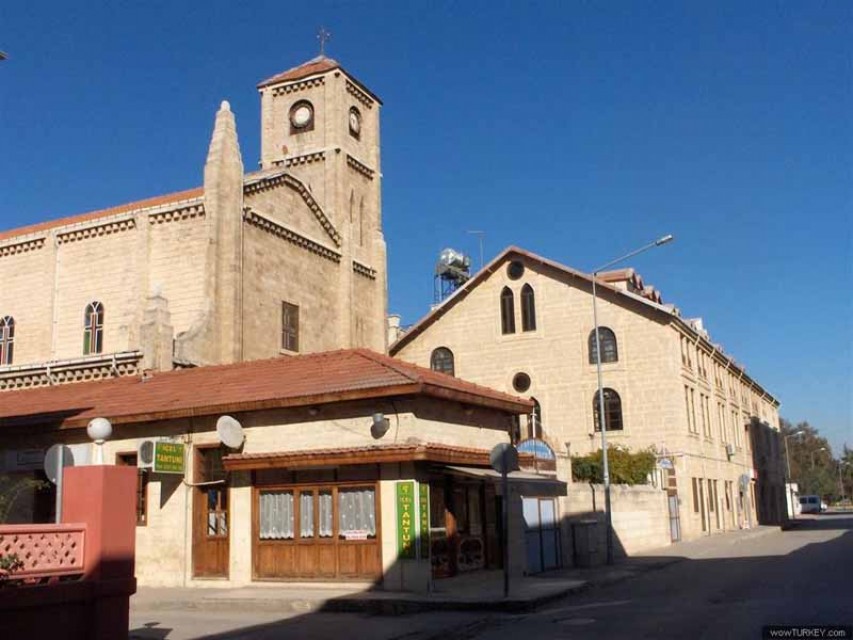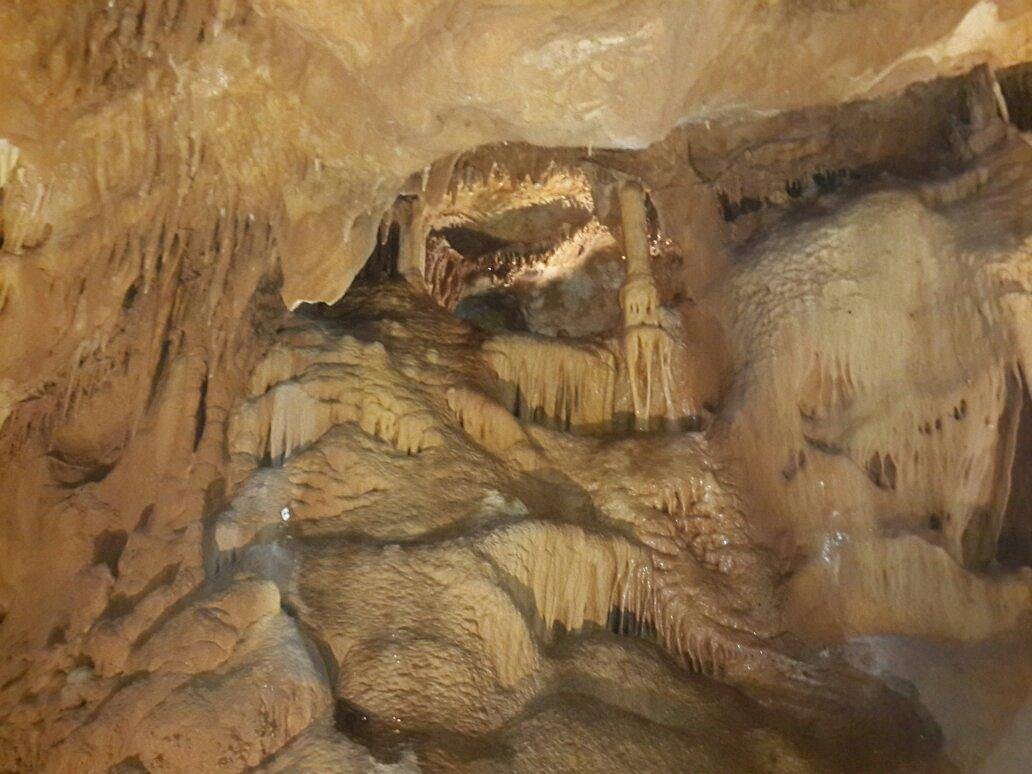Mersin Province is the cradle of many civilizations, being the main location of the Roman Empire. As a province of Byzantium, the region preserved hundreds of dwellings, thousands of burials, dozens of palaces and fortresses, as well as dozens of Christian churches that exist to this day next to mosques. Architectural monuments up to 2-2.5 thousand years old are perfectly preserved, because... Mersin is the only earthquake-safe region in Turkey.
 There are many shrines in Mersin, places of power revered by people of different nations, religions, even atheists and bioenergeticists recognize the power invisible to the human eye. One of these places is the Cave of Heaven and Hell (Janet - Jahhanem). A mythological river flows here, where Achilles's mother bathed him, holding him by the heel. After bathing, he received invulnerability, except for one place that was not lowered into the water - his heel. Today people from all over the world come here for healing in the miraculous water, and to make wishes in the Cave of Paradise. However, not everyone will be destined to plunge into the mysterious river. The place seems to “not let” some people in, and even after going down the thousand-year-old steps, of which there are 450 by the way, the river may not “appear” to you. A river can appear and disappear in the bowels of the earth at any time. The cave looks like a miraculous temple, where you can find holy images in the rocks and see or photograph angels (phantoms). The energy, beauty and grandeur of this place are difficult to describe. Therefore, we recommend everyone to visit the cave of Heaven and Hell.
There are many shrines in Mersin, places of power revered by people of different nations, religions, even atheists and bioenergeticists recognize the power invisible to the human eye. One of these places is the Cave of Heaven and Hell (Janet - Jahhanem). A mythological river flows here, where Achilles's mother bathed him, holding him by the heel. After bathing, he received invulnerability, except for one place that was not lowered into the water - his heel. Today people from all over the world come here for healing in the miraculous water, and to make wishes in the Cave of Paradise. However, not everyone will be destined to plunge into the mysterious river. The place seems to “not let” some people in, and even after going down the thousand-year-old steps, of which there are 450 by the way, the river may not “appear” to you. A river can appear and disappear in the bowels of the earth at any time. The cave looks like a miraculous temple, where you can find holy images in the rocks and see or photograph angels (phantoms). The energy, beauty and grandeur of this place are difficult to describe. Therefore, we recommend everyone to visit the cave of Heaven and Hell.
 PS The author of this text has repeatedly observed the “playful” behavior of the river and there are hundreds of testimonies, including scientific ones, that speak of the high energy of this place, as can be judged by thousands of eyewitnesses whose wishes were fulfilled and who were able to photograph the angels with their cameras.
PS The author of this text has repeatedly observed the “playful” behavior of the river and there are hundreds of testimonies, including scientific ones, that speak of the high energy of this place, as can be judged by thousands of eyewitnesses whose wishes were fulfilled and who were able to photograph the angels with their cameras.
In terms of religious tourism, the province has two main structures.
The first of these is the House, Church and Well of the Apostle Jesus Christ, St. Paul, located in Tarsus and recognized by the Vatican as the Place of the Cross.
In Tarsus, Saul, the future Apostle Paul, was born into a family of Hellenized Jews. According to biblical legend, on the way to Damascus, Saul was struck by a bright light from heaven and heard an unknown voice: “Saul, Saul! Why are you persecuting Me? — after which he became blind. The people traveling with him led him to Damascus, where he was healed by the Christian Ananias. Struck by what had happened, Saul believed in Christ and was baptized. After he converted the proconsul of Cyprus, Sergius Paulus, to Christ, Saul began to be called Paul.
The Apostle Paul also preached in his native Tarsus, where he gained many followers. The house in which the Apostle Paul once lived in Tarsus has not survived. However, the well located next to it, now called the well of St. Paul (St. Paul Kuyusu), has survived to this day. Already in the first centuries of Christianity, it became a place of pilgrimage, and the water from it was considered holy and healing properties were attributed to it.
Another important pilgrimage site was the Church of St. Paul. It is believed that the first temple in its place was built in the 4th century under Emperor Constantine. Later it was destroyed during wars with Muslims and rebuilt again by the Crusaders at the turn of the 11th-12th centuries. In those days, pilgrims traveling to the Holy Land considered it their indispensable duty to make a stop in Tarsus.
The second structure is the one declared in the early Christian period as the Place of the Cross of Azize Aya Tekla (Meryemlik) - the Church of St. Thekla, a structure located in Silifika/Bashucu and recognized by both the Muslim and Christian world as a place of religious visits. Also within the province is the Cave of Tarsus Ashaba Kef (Cave of the "Seven Sleepers", "People of the Cave").
The tradition of the "Seven Sleepers" exists in both the Christian and Muslim traditions.
The Islamic version of the legend of the young sleepers is well known in the Muslim world, as it is quoted in the Qur'an. The Islamic version of the legend also mentions a faithful dog that accompanied the young men on the way to the cave and slept at its entrance. People passing by saw a sleeping dog and were afraid to look inside, thinking that it was guarding the secrets of the cave.
According to the Christian version of the legend, there were seven young men who were accused of belonging to the Christian community during the period of persecution. Then a group of young men fled the city and hid in a cave. When they were found sleeping in the cave, the entrance was sealed by order of the emperor. Many years later, Christianity was transformed from a persecuted religion into the official state religion. More than 250 years later, when Christianity became the official state religion, the emperor decided to demolish the entrance to the cave. Imagine his surprise when inside he saw seven sleeping men who had not aged a day. They woke up with the confidence that only a day had passed.
